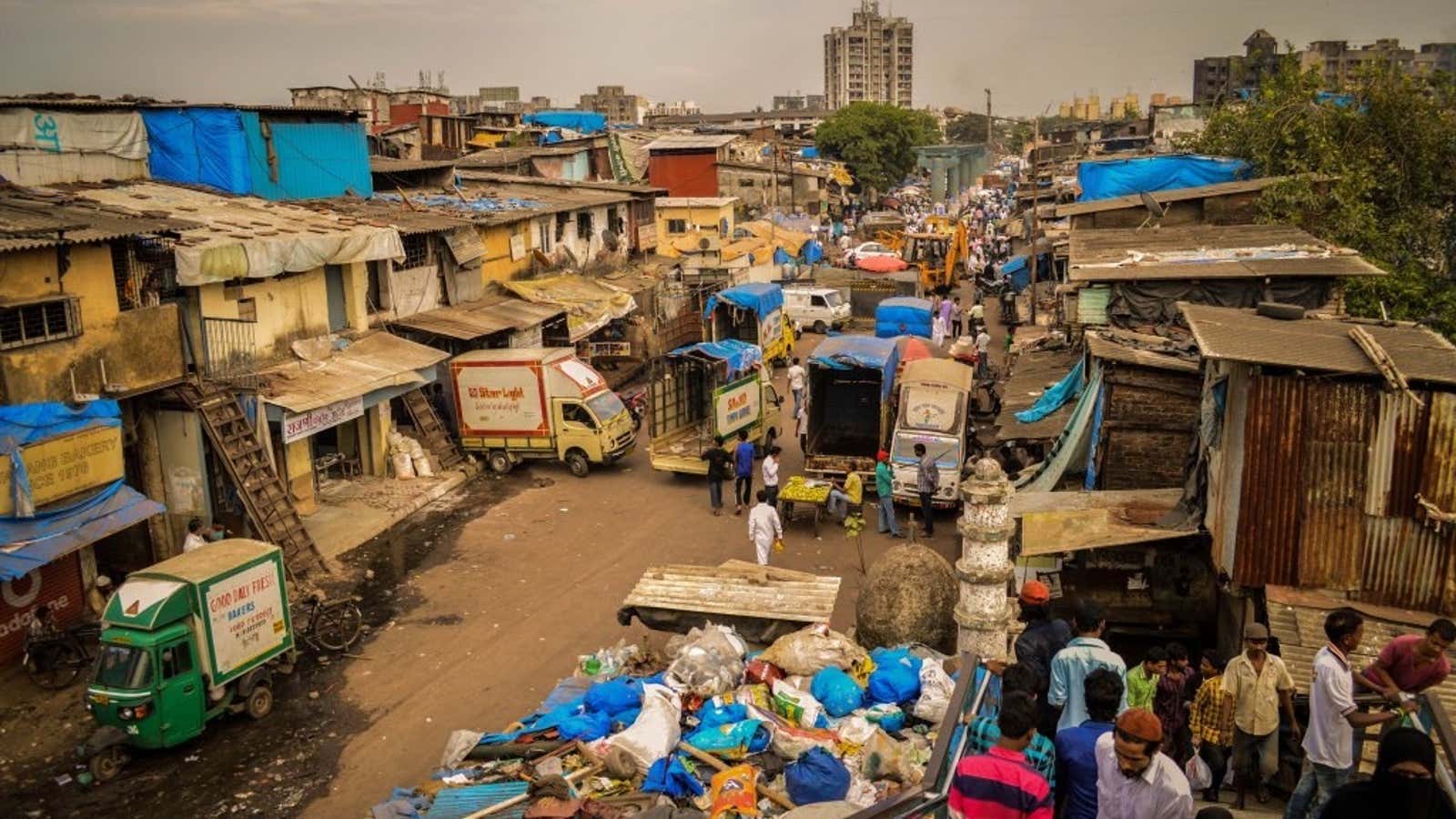The Internet of Things (IoT) is coming to a 535-acre slum in the heart of Mumbai.
Home to more than one million people, Dharavi is one of Asia’s largest slums. Shanty-homes line its narrow alleyways where open drains run along the ground and electric cables hang overhead. The slum’s manufacturing and retail ecosystem is worth more than $1 billion on its own. Residents work in a variety of industries—leather tannery, textiles, pottery, recycling—and Dharavi’s bustling market is a retail haven for savvy buyers of leather products, jewellery, furniture, textiles, and more.
Now, vendors in this city-within-a-city are getting help from the IoT. Using 30 beacon devices provided by Google, a group of researchers from the Industrial Design Centre (IDC) at Indian Institute of Technology (IIT), Bombay, along with researchers from Swansea University in the UK, is creating a “physical web” connecting different shops in Dharavi’s markets. The initiative is part of the Google IoT Research Award Pilot, announced last February. Overall, Google has provided 100 beacon devices for the Dharavi project.
Designed to allow any smart device to interact with real-world objects without having to download specific applications, Google’s Beacon platform lets retailers send timely alerts to nearby shoppers. The wall-mounted beacon can broadcast a web URL to anyone with a Bluetooth-enabled smartphone standing up to 30 feet away. Once a customer receives the notification and opens the link, he or she is taken to an interactive online marketplace that offers information on what vendors in the locality are selling. To make sure that prospective customers are aware of the program, shopkeepers have been provided with posters asking shoppers to turn on their Bluetooth.
“Most people who might be passing by Dharavi’s leather market might not even know that these markets have such good-quality crafty products,” says Chinmay Parab, a master’s student at the IDC who worked on the project. “[This technology will give them] digital visibility.”
With the first 30 beacons, researchers targeted Dharavi’s leather stores; for the remaining 70, they have their sights set on Kumbharwada, Dharavi’s potters’ colony, and garment vendors. Researchers will study the beacons for five weeks, though shopkeepers will be able to keep the devices even after the experiment is over. Once programmed, the devices can last for up to three years.
Dharavi’s vendors are no strangers to technology: According to The Hindu newspaper, many are adept at video chat, Google voice search, and messaging tools like WhatsApp. But some remain wary of the beacons, only 11 of which have been adopted since installations began two weeks ago.
“It is taking a bit more time than we expected to convince people, but we expected an inertia to [adopting] any new technology,” says Parab, adding that researchers are in talks with 19 more shops about participating in the project. Some store owners say they are satisfied with their loyal customer base, although those aware of growing competition from Amazon, Flipkart, and Snapdeal are more likely to experiment with the beacons.
No matter how technologically advanced they become, Dharavi’s market remains an informal one. The government has repeatedly threatened to upend the area’s unregistered businesses and develop residential and commercial skyscrapers on the land instead. Parab hopes the beacon project might forestall such a result by changing the public’s perception of Dharavi.
“The economy that runs in parallel in Dharavi is always ignored under this ‘Asia’s largest slum’ image that we all have,” he says. “We’re attempting to give Dharavi, even though on a small scale, a new identity of being a digital hub.”
